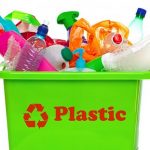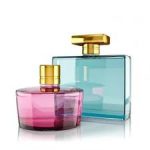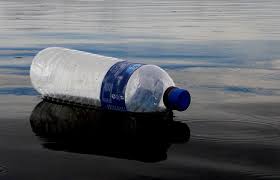 This month’s contaminant(s) could just as well be titled “Endocrine Gland Disruptors” since this group of organic chemical compounds, typifies the behavior of a large group of substances, many of which are found in certain plastics. A former Pure Water distributor by the name of Dr. Theo Colborn, co-authored a book titled “Our Stolen Future” in which the dangers of these contaminants in our water and food were spelled out in great detail. Dr. Colborn was ahead of her time in many respects, at least as far as knowledge of these dangerous chemicals and the need to have them regulated. Phthalates are easily released into the environment. In general they do not persist in the outdoor environment because of bio-degradation and photo-degradation. They can however buildup in indoor environments! Outdoor air concentrations are higher in urban and suburban areas the in rural and remote areas.
This month’s contaminant(s) could just as well be titled “Endocrine Gland Disruptors” since this group of organic chemical compounds, typifies the behavior of a large group of substances, many of which are found in certain plastics. A former Pure Water distributor by the name of Dr. Theo Colborn, co-authored a book titled “Our Stolen Future” in which the dangers of these contaminants in our water and food were spelled out in great detail. Dr. Colborn was ahead of her time in many respects, at least as far as knowledge of these dangerous chemicals and the need to have them regulated. Phthalates are easily released into the environment. In general they do not persist in the outdoor environment because of bio-degradation and photo-degradation. They can however buildup in indoor environments! Outdoor air concentrations are higher in urban and suburban areas the in rural and remote areas.
For your information, the word phthalate is pronounced as though the (ph) is silent…in other words “thalate”. For you “chemists” out there, phthalates are the most commonly used plasticizers in the world and are categorized as high and low, depending on their molecular weight. (We won’t get into the actual chemical structure here.)
- High phthalates include those with 7-13 Carbon atoms in their chemical backbone, which gives them increased permanency and durability. The most common types of high phthalates include di-isononyl phthalate (DINP), di-isodecyl phthalate (DIDP) and di-propylheptyl phthalate (DPHP). High phthalates are commonly used in PVC products such as wire and cable, flooring, wall covering, self-adhesive films, synthetic leather, coated fabrics and roofing and automobile applications.
- Low phthalates include those with 3-6 carbon atoms in their chemical backbone. The most common types of low phthalates include di(2-ethylhexyl) phthalate (DEHP) and di-butyl phthalate (DBP). Low phthalates are commonly used in medical devices, general purpose PVC, adhesives and inks.
 This common chemical ingredient in plastics, phthalate, has been linked to negative effects on the development of masculine traits including smaller penises and incomplete descent of testicles in male infants. Phthalates, which are added to plastics to keep them soft and pliable, are linked to a feminizing effect on boy fetuses whose mothers had above-average levels of the chemical in their urine while pregnant. Mothers who had the highest amounts gave birth to boys with more feminine characteristics.
This common chemical ingredient in plastics, phthalate, has been linked to negative effects on the development of masculine traits including smaller penises and incomplete descent of testicles in male infants. Phthalates, which are added to plastics to keep them soft and pliable, are linked to a feminizing effect on boy fetuses whose mothers had above-average levels of the chemical in their urine while pregnant. Mothers who had the highest amounts gave birth to boys with more feminine characteristics.
Scientists have been concerned about the effects of the phthalates, known as DEHP, because rodent studies showed it had a negative effect on the masculinity of young rats. Current research conducted in three different areas of the United States, showed their concerns were well-founded. Scientists discovered a definite correlation between levels of the chemical in pregnant mothers and a feminizing effect on their sons. They theorize that phthalates may reduce testosterone synthesis.
You may be surprised to find that Phthalates are being added to many personal care products including perfume, nail polish and  hair spray. They are also included in many cosmetics, but the consumer is unaware because they are not specifically listed on the label, hiding under other items such as fragrances. An environmental website called The Daily Green lists the following steps to avoid phthalates and Bisphenol A:
hair spray. They are also included in many cosmetics, but the consumer is unaware because they are not specifically listed on the label, hiding under other items such as fragrances. An environmental website called The Daily Green lists the following steps to avoid phthalates and Bisphenol A:
- Read the ingredients. According to the organization Pollution in People, you can identify phthalates in some products by their chemical names, or abbreviations: (Notice the letter P on the end of each of the offending additives.)
o DBP (di-n-butyl phthalate) and DEP (diethyl phthalate) are often found in personal care products, including nail polishes, deodorants, perfumes and cologne, aftershave lotions, shampoos, hair gels and hand lotions. (BzBP, see below, is also in some personal care products.)
o DEHP (di-(2-ethylhexyl) phthalate or Bis (2-ethylhexyl) phthalate) is used in PVC plastics, including some medical devices.
o BzBP(benzylbutyl phthalate) is used in some flooring, car products and personal care products.
o DMP (dimethyl phthalate) is used in insect repellent and some plastics (as well as rocket propellant).
 Be wary of the term “fragrance,” which is used to denote a combination of compounds, possibly including phthatates, which are a subject of recent concern because of studies showing they can mimic certain hormones.
Be wary of the term “fragrance,” which is used to denote a combination of compounds, possibly including phthatates, which are a subject of recent concern because of studies showing they can mimic certain hormones.- Choose plastics with the recycling code 1, 2 or 5 for food and water containers. Recycling codes 3 and 7 are more likely to contain bis-phenol A or phthalates. Although the word “phthalate” appears in the name, PETE (1) doesn’t not use phthalates as plasticizers.
Source: http://www.thedailygreen.com/environmental-news/latest/phthalates-47020418
How does this relate to our distillation products? The EPA MCL for phthalate is 0.006 Mg/L (6 ppb). Due to the high boiling points of phthalates, and very low vapor pressures, they should be removed rather easily in an air-cooled vented water distiller, but activated carbon post-filtration is advised for added safety. The reactivity of distilled water makes it extremely important to carefully choose the container it is stored in. If distilled water is stored in a plastic containing phthalates, these compounds will be quickly absorbed into the water and consumed by the person drinking it.
It is best to store distilled water in a glass container if all possible. If one does store distilled water in a plastic container, be sure that it is one with one of the recycling codes listed above. (Plastic containers with the recycling code 2 (HDPE or High Density Polyethylene) are the safest to use for storing distilled water.) The above advice also applies when purchasing other types of water as well.
